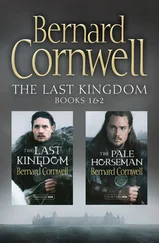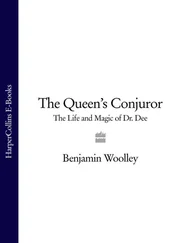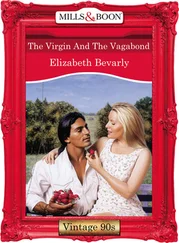By this stage, life for the settlers was settling into a routine, and some were beginning to feel a little at home. A group surveying the surrounding land found ‘the ground all flowing over with fair flowers of sundry colours and kinds as though it had been in any garden or orchard in England’. 14
Many of the settlers were by now anxious that Newport should head back home at the earliest opportunity to fetch more supplies. The mission plan had been drawn up on the basis of a return by May of that year 1607, and provisioned accordingly. But on Thursday 21 May, Newport declared that, rather than embark for England, he would lead the ‘discovery’ of the river commissioned by the Royal Council. From his perspective, his own future, as well as that of the mission, rested upon the discovery of precious metals, or navigating a new route to the South Seas. He could not afford to go home empty-handed.
He chose to accompany him George Percy, Robert Tyndall, Gabriel Archer – who was to keep a journal – and Thomas Wotton, the surgeon. He also decided to release Smith from custody and take him too, perhaps to keep him out of Wingfield’s way, or to offer him an opportunity to redeem himself. The rest of the company was made up mostly of the crew of his ship, the Susan Constant . The Royal Council had also called for Gosnold to ‘cross over the lands’ with twenty men, ‘carrying half a dozen pickaxes to try if they can find any mineral’. No such expedition was mounted.
As the time approached for Newport’s departure, he called his men before him, and pledged that none would return until they had found ‘the head of this river, the lake mentioned by others heretofore, the sea again, the mountains Apalatsi, or some issue’, by which he meant the legendary saltwater lake somewhere in the American interior, which might provide navigable access to the ‘South Sea’ or Pacific, and the Appalachian mountain range, from which was said to run the ‘stream of gold or copper’. 15
At noon, they climbed aboard the shallop, hoisted its sails, and, beneath a hot, early summer sun, began their slow progress upstream.
By the first night they had managed 18 miles, reaching a ‘low meadow point’ on the south side of the river. There they met the Weyanock people, who claimed to be hostile towards the Paspahegh. The following morning, they set off early, managing 16 miles before breakfast. Stopping at an islet created by a large loop in the river, they found ‘many turkeys and great store of young birds like blackbirds, whereof we took divers which we break our fast withal’.
A canoe carrying eight Indians appeared on the river, and the English hailed them with one of the first words they had learned: ‘ wingapoh ’, which they understood to mean ‘good fellow’. The Indians approached, and ‘in conference by signs’, the English asked them for guidance on the river’s course. One of the Indians, apparently the leader of the group, stepped forward and offered to help. Archer was unable to discover his name, so dubbed him the ‘Kind Consort’.
Using his toe, the Kind Consort started to draw a map in the sand of the river bank. Archer stopped him, offering him a pen and paper, and showing how he could use it. Immediately understanding what he had to do, the Kind Consort began to draw, laying out for the delighted English ‘the whole river from the [Chesapeake] Bay to the end of it, so far as passage was for boats’. He indicated that, upstream of ‘Turkey Isle’, as Archer had dubbed their current location, lay another islet, and beyond that, a series of waterfalls, marking the end of the navigable river. A day’s march beyond the falls, the river divided in two, both branches coming from the mountains. This was the land of two other ‘kingdoms’. ‘Then, a great distance off,’ stood the mountains of ‘Quirank’, which, he whispered, had rocks containing veins of caquassan , understood to be the Indian word for red earth, which might signify the presence of copper or even gold. Furthermore, the Kind Consort confirmed that just beyond these mountains lay ‘that which we expected’, as Archer coyly put it in his journal, referring to the saltwater lake.
Anxious to proceed, Newport declined offers of hospitality from the Kind Consort, and sailed on. However, the Indian ‘with two women and another fellow of his own consort’ was anxious to track the English, and continued to follow them in the canoe, proffering dried oysters from a basket as they went. Eventually, the English found they could no longer resist, and, rendezvousing at a ‘point’ on the river bank, ‘bartered with them for most of their victuals’.
Two miles further up lay the first signs of the rockier world ahead, the shore being ‘full of great cobblestones and higher land’. Once again, the Kind Consort appeared, this time offering ‘sweet nuts like acorns (a very good fruit), wheat, beans, and mulberries sod [soaked] together’. Newport bought what he could, after which the Indian disappeared.
The following day, a further 5 miles on, the English landed, and ‘found our kind comrades [the Indians] again’, who escorted them to a town on the north bank of the river called Arrohateck. There they received their most opulent welcome yet. A feeling spread among the English that, as they proceeded west, they were closing in on the centre of Indian power.
‘King Arrohateck’, as Archer named the town’s weroance , honoured Newport by laying a reed mat across his shoulders and placing a crown of ‘deer’s hair dyed red’ upon his head. He offered the visitors ‘mulberries, sod wheat and beans, and he caused his women to make cakes for us’. He also volunteered some of his men as guides for the journey into the interior.
It was from King Arrohateck that the English first discovered that there was a ‘great king’, a supreme ruler or mamanatowick to whom all the chiefs around the river paid homage and tribute. His name was Powhatan. ‘Now as we sat merry banqueting with them, seeing their dances and taking tobacco,’ the chief’s warriors suddenly got to their feet, and formed a guard of honour for another guest, whom they welcomed with a ‘long shout’. This, the English thought, must be the mamanatowick Powhatan himself. It was in fact his son Parahunt, known as ‘Tanxpowhatan’ or ‘Little Powhatan’, the confusion arising because the town he ruled was also called Powhatan, perhaps because it was the mamanatowick ’s birthplace. 16
Noting that King Arrohateck had remained seated, the English guests did likewise, ‘our captain in the middest’. However, acknowledging the status of the new arrival, Newport offered ‘gifts of divers sorts, as penny knives, shears, bells, beads, glass toys, etc., more amply than before’. In gratitude for the generosity, ‘King Powhatan’ offered provisions and guides to escort the English to his town, further upriver. ‘Thus parting from “Arrohateck’s joy”,’ wrote Archer, brimming with optimism, ‘we found the people on either side the river stand in clusters all along, still proffering us victuals.’
A further 10 miles upstream, the river narrowed. On the northern bank rose the most striking landmark they had yet seen: a tall mound in the midst of fields full of wheat, beans, tobacco and other crops, intermingled. On top of the mound there was a collection of houses, which for the English had the appearance of the Indian capital. Archer called it ‘Powhatan’s Tower’.
They landed, and walked up to the town, where they found the Powhatan and Arrohateck chiefs waiting for them. The English noticed that they now sat apart from their own people. The only other person with them was a man who appeared to be a counsellor, who sat beside Parahunt. Once again, food was offered, ‘but our best entertainment was [the] friendly welcome’. There followed a discussion by ‘words and signs’ during which King Powhatan explained that all the ‘kingdoms’ on the north bank of the rivers were cheisc , which the English understood to mean ‘all one with him’ or ‘under him’. But the Chesapeake people, who lived on the southerly shore of the bay, were the enemy ‘generally to all these kingdoms’. Archer showed the chief the scars on his hands, barely healed, which had been inflicted by these Indians when the English first landed, and ‘for which we vowed revenge, after their manner pointing to the sun’.
Читать дальше












